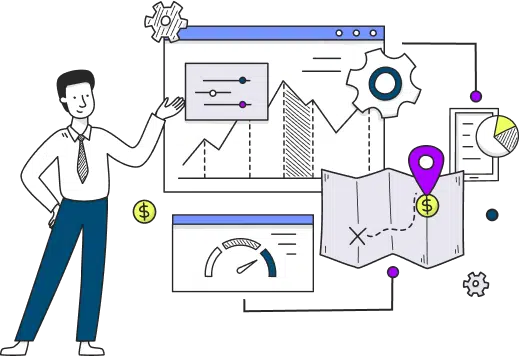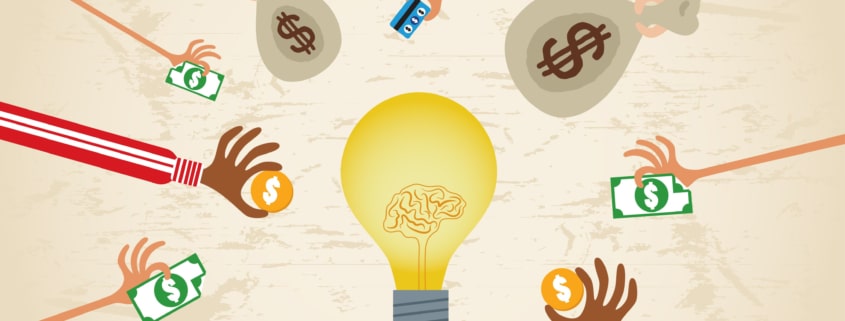Looking to get your first small business loan? It can be a confusing process, especially when it comes to understanding the qualifications you’ll need to meet and why lenders have these requirements for a business loan. Both traditional banks and alternative lenders will judge your worthiness for a loan based on a specific set of risk criteria, whether you are seeking a basic business loan, an SBA loan, a line of credit, or any other type of financing.
Before you apply for financing, it will help you to understand how lenders determine how much of a risk you represent so that you can be ready to get approved. While much of it depends on your personal credit score, there are other factors that weigh heavily as well depending on the type of financing you are seeking.
What do I need to Qualify for a Business Loan?
Every lender, be it a traditional bank or alternative financing entity, will view you as a risk when you apply for a business loan, and will judge your risk based on specific factors before they approve your loan. Let’s run through the most common business loan qualifications and why lenders use them to evaluate whether they should approve your loan:
Personal & Business Credit Scores
FICO score. If your business is fairly new (2-3 years old) and you’re seeking your first loan or other form of financing, your personal credit score provides a quick snapshot of how well you manage your finances, both in the past and present. This indicates to potential lenders the likelihood of you making on-time payments toward a new loan. Three main credit agencies – Transunion, Experian, and Equifax – keep tabs on your debts such as credit card debt, mortgages, and car loans, tracking your payment history. Generally, the factors that make up your score are:
- Payment history. This is the factor that counts most heavily toward your credit score. The longer your history of on-time payments towards your debt, the higher your score. If you don’t have a perfect history, you may want to wait before applying for a loan so that you can have 6-9 months of on-time payments.
- Debt-to-credit ratio. This indicates how much debt you have relative to your credit limits. If your credit cards are maxed out, this indicates that you can’t manage your debt well, regardless of how many on-time payments you’ve made.
- Debt history. Your credit score gets a boost if you have been in good standing with a credit card or other form of debt account for a long period of time.
- The number of hard credit inquiries. This is when a lender or some other entity requests a detailed report of your credit score. This usually happens when you apply for a mortgage, car loan, or new credit card. If there are too many hard inquiries, this could indicate to the credit agencies uncertainty about your finances. This factor, however, isn’t weighed nearly as heavily as the aforementioned factors.
- Credit mix. This indicates the number of different types of debt you have, including car loans, personal loans, mortgages, or credit card debt. This typically is not factored very heavily into your credit score, but it may be important if you don’t have a long credit history.
- Which lenders look at your FICO score? Just about every type of lender, including traditional banks, alternative lenders, credit unions, and online lenders will pull your credit score when you apply for a loan. Alternative lenders typically require a lesser credit score, usually in the 650-680 range, than a traditional bank, which often requires a score of 680 or above.
- For which types of financing is your FICO score most important? While your FICO score will be examined by just about every type of lender, the types of loans that it is most important to are bank loans, SBA 7a loans, and business lines of credit. There are also lenders that specialize in helping small business owners with bad credit.
Business credit score. If your business is established and has used financing in the past such as a business loan or a line of credit, or even if you have a business credit card, your business has a business credit score. These scores are produced by credit bureaus such as Dunn & Bradstreet, Equifax, Transunion, and Experian, with Dunn & Bradstreet being the most popular credit bureau that potential lenders look at.
Much like your personal FICO score, your business credit score gives lenders a quick overview of how well your business has managed its debt and expenses. A good business credit score will make obtaining financing for your small business much easier; will make your business more trustworthy to suppliers, and can even help lower your business insurance rates.
While you can usually access your personal FICO score for free, you might have to pay a small fee to one or all of the rating agencies to see your business score. A business credit score does consider additional factors beyond those that go into a personal FICO score:
- How well you’ve managed your business’ debt. Much like your personal FICO score, if your small business has taken on financing such as a bank loan, SBA loan, or line of credit, a consistent history of on-time debt payments will be the biggest factor in determining your business credit score.
- Personal financial information. Even if your small business is strong, the credit bureaus will still factor in your personal financial information, such as your assets, liabilities, and personal FICO score.
- The riskiness of your industry. If your small business operates in an industry where closures and bankruptcies are frequent (such as the restaurant industry, for example), this could negatively affect your business credit score.
- Assets. The credit bureaus will also take into account your business’ assets such as machinery, business vehicles, office equipment, real estate, etc. when determining your score. If your small business has a lot of valuable assets on its books, this could raise your business credit score.
Which lenders look at your business credit score? All lenders look at your business credit score if your business has been in operation for a few years and has previous debt, even a business credit card.
For which type of financing is business credit score most important? Depending on the type of lender you are dealing with, you will need a moderate-to-strong business credit score to obtain bank loans, term loans, SBA 7a loans, and business lines of credit. Your business credit score will also be looked at for equipment financing, but won’t be emphasized as much since the equipment you are purchasing serves as collateral.
Debt-to-revenue ratio. One of the most fundamental questions on the minds of potential lenders is, “can this business afford to take on additional debt?” As such, they are going to compare the existing debt of your business to your business’s annual revenue. If the number isn’t strong, they could determine that your business is too risky to lend to.
Which lenders look at debt-to-revenue ratio? Since this risk factor is so fundamental, most lenders closely look at this to determine if you qualify for a loan.
For which type of financing is your debt-to-revenue ratio most important? Most small business debt products do require a strong debt-to-revenue ratio, including term loans, SBA 7a loans, business lines of credit, and equipment financing.
Cash flow history/bank statements. Your cash flow is simply the amount of money that’s flowing into your business versus the amount of money that’s flowing out. A strong, consistent cash flow history indicates to a lender that you can afford to make future loan payments. It also indicates to them whether you spend money wisely on your small business and indicates the sustainability of your business. Doing this proves to your potential lender that your small business has a strong cash flow and will go a long way toward getting your loan approved.
- Which lenders look at your cash flow history? Again, almost all lenders will examine your cash flow history and will want to see several months’ worth of business bank statements.
- For which types of financing is your cash flow history most important? Your business’s cash flow history is generally most important to bank (term) loans, SBA 7a loans, lines of credit, invoice factoring, and revenue-based financing. For invoice factoring and revenue-based financing, lenders will want to examine your accounts receivables, the creditworthiness of your customers, and outstanding invoices.
Government documents. All potential lenders need to know that your business exists in the eyes of both your state government and the IRS. Before you are even considered for a loan, you need to show an Employee Identification Number for tax purposes. You also need to be registered as a LLC or a “Doing Business As” (DBA) company. If your small business is more profitable than most or has several different partners, you can register as an S corporation.
- Which lenders look at your government documents? All lenders require this.
- For which types of financing are your government documents most important? Providing these documents is necessary for any type of financing.
Business plan. Your business plan explains why your business is unique, what your market niche is, shows your current financial statements, and indicates how you plan to make money in the future, among other things. While it’s not an official business document, some lenders want to see one before they approve you for a loan, especially if you are seeking to borrow money to expand your business.
Your business plan will tell potential lenders that you plan to wisely spend the proceeds of your loan, that you’ve done market research, and that you have a well-thought-out plan to increase your revenue. A quick Google search can lead you to several services that offer business plan templates, often for free.
- Which lenders want to see a business plan? Generally, traditional banks and SBA lenders will require a business plan as part of the small business loan application process. Alternative lenders often do not require this.
- For which types of financing is a business plan most important? Traditional banks often require a business plan for a bank loan or SBA 7a loan.
Collateral. If you don’t have a strong credit score or your business is fairly new, a lender may require that you secure your loan with personal assets, such as your house, car, or any other possession of significant value. In essence, putting up collateral acts as a personal guarantee for a lender. While this may be a high-risk proposition for the borrower, putting up collateral on a loan could lower the cost of capital on the loan and increase the amount being borrowed.
- Which lenders require collateral? Traditional banks usually require collateral if they believe a potential borrower represents a high risk. Some alternative lenders may also require collateral in rare cases.
- For which types of financing is collateral required? Many traditional banks may require collateral for term loans and lines of credit if they deem the borrower to be high risk. For financing such as equipment financing and real estate the loans, the machinery, or land being acquired becomes the collateral.
Loans That Have Fewer Requirements
The requirements for obtaining a small business loan may seem overwhelming, but there are financing products that don’t require as much paperwork. These options are great for newer businesses and small business owners that have less-than-stellar credit scores. These include:
- SBA CDC/504 loans. These loans are partially backed by the SBA and administered through community development companies (CDCs). These loans can be up to $500,000 and are often given to businesses for community development, such as renovating storefronts or hiring locally, but the proceeds can also be used for other purposes.
Small business owners typically don’t need stellar FICO scores to obtain this loan, and the interest rates are favorable. However, some CDCs have specific programs in which they only lend to women-owned and minority-owned businesses, or small businesses operating in underserved communities.
- SBA Microloans. These loans are also backed by the SBA and carry very similar requirements as CDC/504 loans but offer small amounts – the maximum amount is $50,000 and in 2022, the average microloan amount was a little under $17,000.
- Working capital loans. These loans are typically offered by online lenders and often charge high interest rates. They don’t emphasize credit scores as much as they do cash flow history, as they are meant for small businesses to keep their operations going during the offseason or when there is a downturn in the economy.
Additional Advice on Business Loan Qualifications
Making sure you meet the qualifications to get a business loan can be a daunting process. To give yourself the best chance of obtaining a loan, make sure you go over a checklist of things you need to do:
- Start early. Loan applications, especially from traditional banks, can be long and complicated. Don’t wait until the last minute to start filling it out.
- Get your paperwork in order. Most lenders require a mountain of paperwork, such as proof that your business is registered with both the state and the IRS, a business plan, a government-issued ID, and several months’ worth of bank statements and tax returns, among other things. Having this at your fingertips will make the process much easier for you.
- Make sure you know why you’re borrowing money. Whenever you borrow money for your business, it’s crucial that you know exactly what you’re going to spend that money on so you’re not left with interest-bearing debt. Most importantly. You should be using borrowed money to invest in your business to increase your revenue to ensure that you can afford to make debt payments.
While loan requirements can be complicated, all it takes is some careful planning to meet all of them before applying for a small business loan. When you speak to a loan representative at either a bank or on the phone with an alternative lender, it’s important to be ready to meet all of their requirements beforehand to ensure that you get the loan that you need to grow your business.












